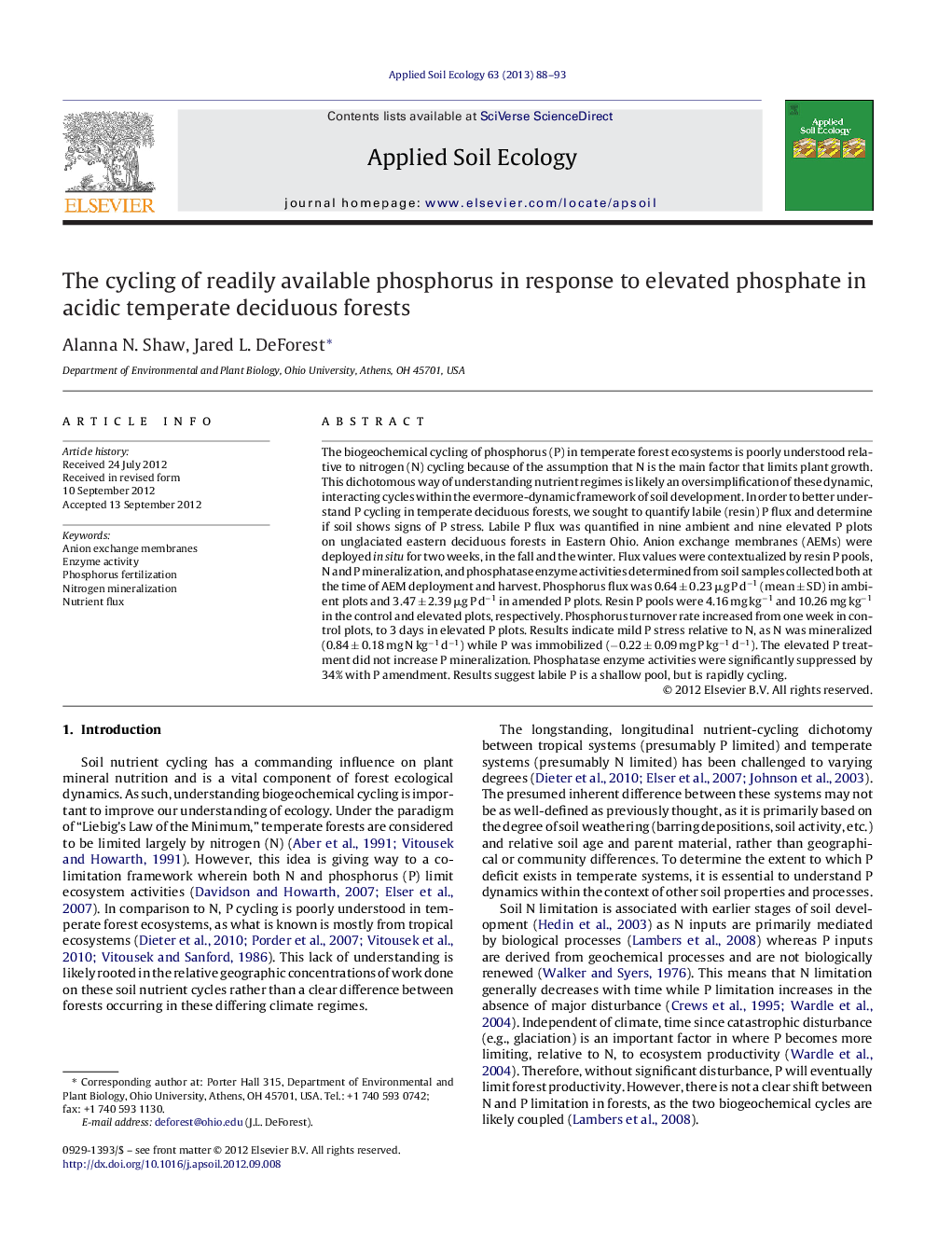| Article ID | Journal | Published Year | Pages | File Type |
|---|---|---|---|---|
| 4382536 | Applied Soil Ecology | 2013 | 6 Pages |
The biogeochemical cycling of phosphorus (P) in temperate forest ecosystems is poorly understood relative to nitrogen (N) cycling because of the assumption that N is the main factor that limits plant growth. This dichotomous way of understanding nutrient regimes is likely an oversimplification of these dynamic, interacting cycles within the evermore-dynamic framework of soil development. In order to better understand P cycling in temperate deciduous forests, we sought to quantify labile (resin) P flux and determine if soil shows signs of P stress. Labile P flux was quantified in nine ambient and nine elevated P plots on unglaciated eastern deciduous forests in Eastern Ohio. Anion exchange membranes (AEMs) were deployed in situ for two weeks, in the fall and the winter. Flux values were contextualized by resin P pools, N and P mineralization, and phosphatase enzyme activities determined from soil samples collected both at the time of AEM deployment and harvest. Phosphorus flux was 0.64 ± 0.23 μg P d−1 (mean ± SD) in ambient plots and 3.47 ± 2.39 μg P d−1 in amended P plots. Resin P pools were 4.16 mg kg−1 and 10.26 mg kg−1 in the control and elevated plots, respectively. Phosphorus turnover rate increased from one week in control plots, to 3 days in elevated P plots. Results indicate mild P stress relative to N, as N was mineralized (0.84 ± 0.18 mg N kg−1 d−1) while P was immobilized (−0.22 ± 0.09 mg P kg−1 d−1). The elevated P treatment did not increase P mineralization. Phosphatase enzyme activities were significantly suppressed by 34% with P amendment. Results suggest labile P is a shallow pool, but is rapidly cycling.
► Elevated P increased P flux, but decreased phosphatase activity. ► Phosphorus turnover was one week in control soils, but three days in elevated P soils. ► Soils for both treatments mineralized N, but immobilized P. ► Results suggest mild P limitation.
